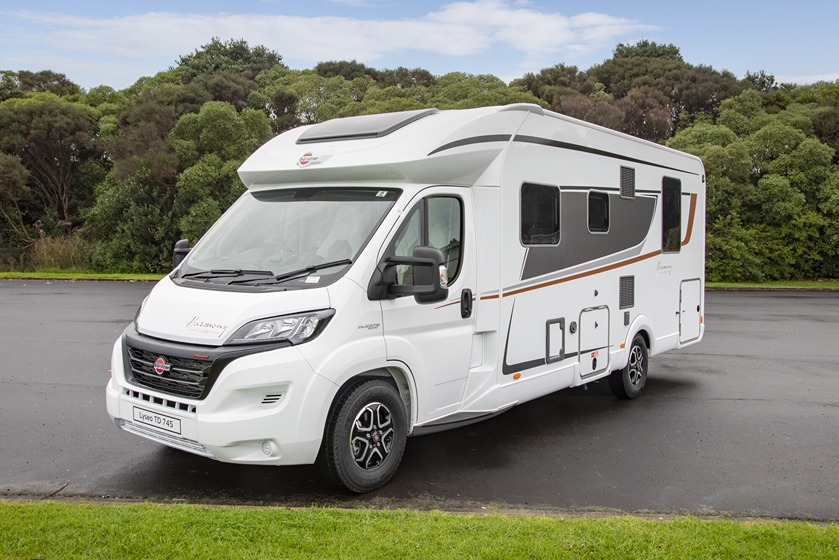
French automotive magnate, André Citroën, was a man always on the lookout for a better way to make cars. Back in 1933, he asked his engineers to investigate what was then considered a radical concept — front wheel drive.
Their report came back highly positive, citing reduced manufacturing costs, more efficient use of space, greater freedom of design and better handling through a lower centre of gravity.
As a result, Citroën built an elegant vehicle that would define his company — the 7CV Traction Avant. It would also convince the mass market of the benefits of front wheel drive.
In this article, we discuss the key differences between front and rear wheel drive motorhomes, the main advantages between them and how front wheel drive improved over time. And we share an on-the-road experience — driving the challenging Molesworth Road between Hanmer Springs and Blenheim in a front wheel drive motorhome.
|
Contents |
Origins of the front wheel drive motorhome
Before the introduction of the Fiat Ducato platform revolutionised the world of motorhomes in 1981, they were typically built on truck chassis or converted from buses. Up until then, finding a front wheel drive motorhome in New Zealand, or even Europe, was difficult.
Fiat decided to commit to the motorhome market and invested heavily in designs which would make the Ducato the market leader for comfort, performance and value.
This commitment bore fruit over the ensuing decades, as even traditional rear wheel drive proponents like the Mercedes Sprinter and VW Crafter introduced entry level front wheel drive motorhomes. This was their attempt to reclaim market share lost to the Fiat Ducato.

New Zealand's rear wheel drive motorhome traditionalists remained unconvinced as the front wheel drive market gained momentum. Would front wheel drive motorhomes imported from Europe be able to handle conditions in the land of the long white cloud?
The king of drivelines
Almost one hundred years after Citroën’s new concept, front wheel drive is now the popular king of all drivelines. The vast majority of passenger vehicles now pull their way along using the front wheels to transfer driving force to the road surface.
It’s taken a little longer for the commercial vehicle sector to embrace front wheel drive — but this drivetrain format is now dominant. Popular motorhome platforms like the Fiat Ducato, Ford Transit, Peugeot Boxer and Citroën Trafic all use it.
The key difference between front and rear wheel drive motorhomes
A drivetrain system is what helps power your motorhome down the road. Your recreational vehicle’s drivetrain is determined by which wheels get the power — rear wheel, front wheel or four wheel drive (4WD).
The drivetrain, also known as the driveshaft, allows your RV to shift from being idle to driving.
Drive components of front wheel drive motorhomes
A front wheel drive motorhome uses constant velocity (CV) joints rather than universal ones like a rear wheel drive model. The front wheels provide the power — with all the drivetrain components located in the front of the motorhome.
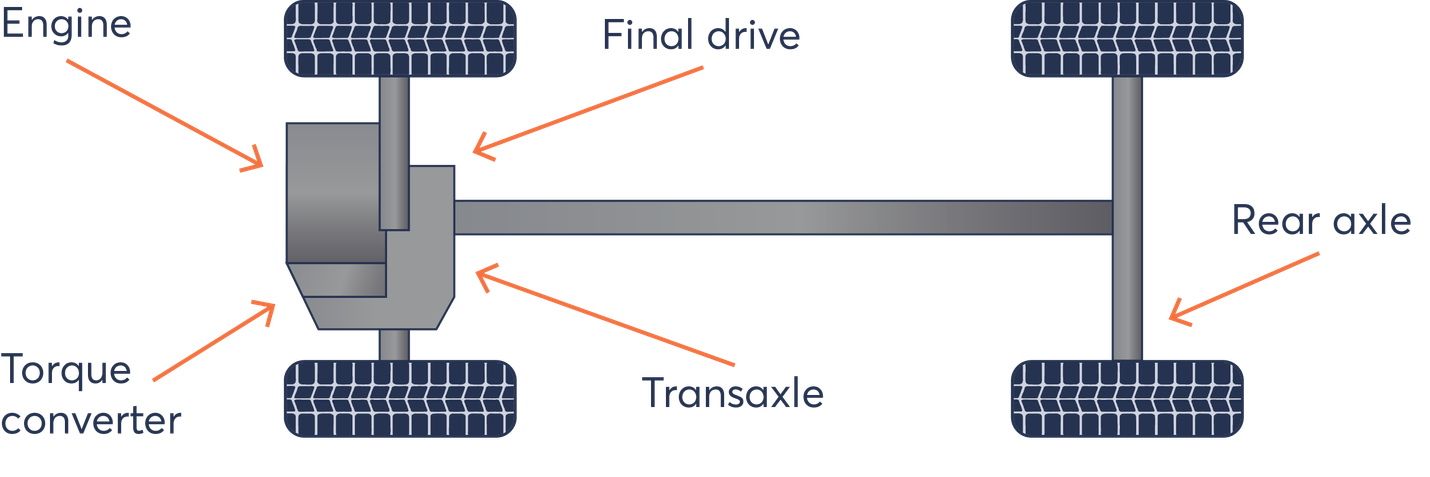
The drive components are placed in the front in front wheel drive motorhomes.
Drive components of rear wheel drive motorhomes
With a rear wheel drive motorhome, it’s the rear wheels that deliver the power. Universal joints connect a long driveshaft to the transmission on one end and the differential on the other.

The placement of drive components in rear wheel drive motorhomes.
For a rear wheel drive motorhome to supply power to its rear wheels, the drive shaft runs the length of the chassis. The chassis influences the design of both the front cab and the habitation unit.
The consequences of this configuration can have quite an impact on some key parts of your motorhome, including:
-
Performance — rear wheel drive motorhomes usually have better traction when navigating up steep inclines or carrying a lot of weight, due to the enhanced grip of the drive wheels
-
Function — the placement of the driveshaft can limit your motorhome’s floor design and living space, resulting in an elevated floor, steps in the living space and even less headroom
-
Comfort — a higher floor height can make it less convenient to enter and exit the motorhome while reducing the overall feeling of spaciousness inside.
The rear wheel drive configuration on a motorhome can also contribute to a rougher ride compared to a front wheel drive RV. This is particularly the case on uneven or bumpy roads — because the motorhome’s rear handles the majority of load bearing and propulsion.
Learn more about the layout and floor plan of motorhomes.
The advantages of front wheel drive motorhomes
As with any motorhome purchase decision, there are compromises to be made. You’ll need to weigh up which aspects of a motorhome are most important to you for deciding what you want.
Cost
A motorhome is a substantial investment that may end up being one of your most valuable assets over your lifetime. Cost will likely be a significant element that affects your decision.
The cost of buying a front versus a rear wheel drive motorhome
The single biggest factor impacting the cost of manufacturing a motorhome is the base vehicle.
In a front wheel drive motorhome, the engine’s configuration in relation to the crankshaft and driveshaft is a simpler set up. This makes the base less expensive to manufacture than on a rear wheel drive motorhome.
With a rear wheel drive motorhome, the chassis is heavier so manufacturers tend to load them up with additional features such as dual rear wheels, slide outs and extra water storage. Each extra feature adds to the cost of manufacture.
Overall, a new rear wheel drive motorhome will likely require a larger investment than a front wheel drive one.
Read our comprehensive guide that’s all about the costs of buying and owning a motorhome.
The costs of owning a front versus a rear wheel drive motorhome
Not only will a rear wheel drive motorhome cost you more upfront, the ongoing costs of ownership are also likely to be higher.
Weight is one crucial aspect that comes into the equation. Most front wheel drive motorhomes have lighter suspension whereas the majority of rear wheel drives sit on a heavier chassis — due to the additional weight of the driveshaft.
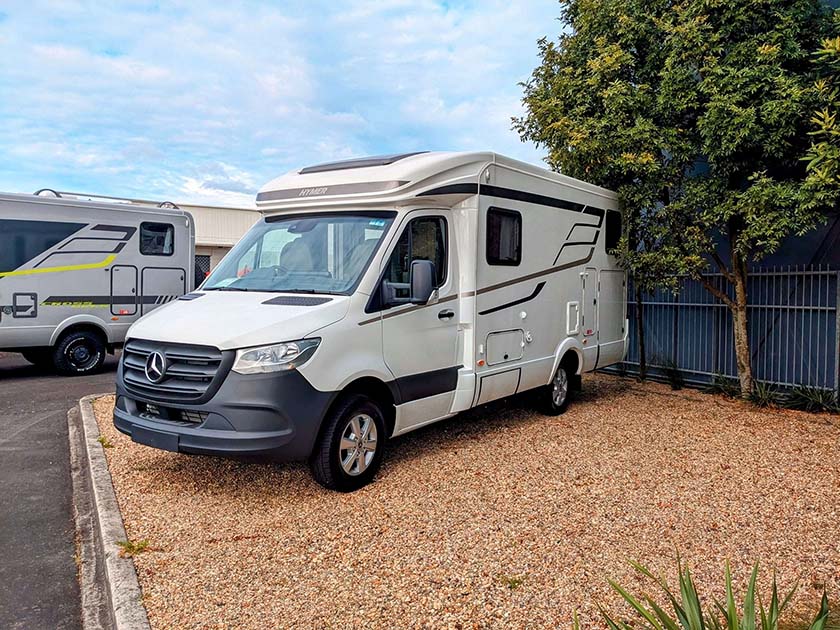
Rear wheel drive models typically weigh more than 5000kg making them heavier than most front wheel drive motorhomes. This leads to higher:
- Fuel consumption — because more energy is needed to move a larger mass
- Compliance costs — a certificate of fitness (CoF) is needed which is more costly and requires more frequent inspections.
Check out our guide to motorhome weight and payload and its impact on carrying capacity and cost of ownership.
The cost of replacement parts may also be higher over time. The drivetrain in a rear wheel drive motorhome has more moving parts than in a front wheel one — so there’s a little more wear and tear on its components. As a result, you’ll need to replace them sooner.
You may also have more tyres to replace if your rear wheel drive motorhome has dual rear wheels — as many do.
Take a look at our blog on how to maintain the right pressure in your motorhome tyres.
Driving
Another factor that has contributed significantly to the increasing popularity of front wheel drive motorhomes is the ease of driving. You’ll feel like you’re almost driving a car — which is ironic because you can drive most front wheel drive motorhomes on a car licence.
If you purchase a much heavier RV that weighs more than 6000kg, you’ll need a truck driver licence (class 2).
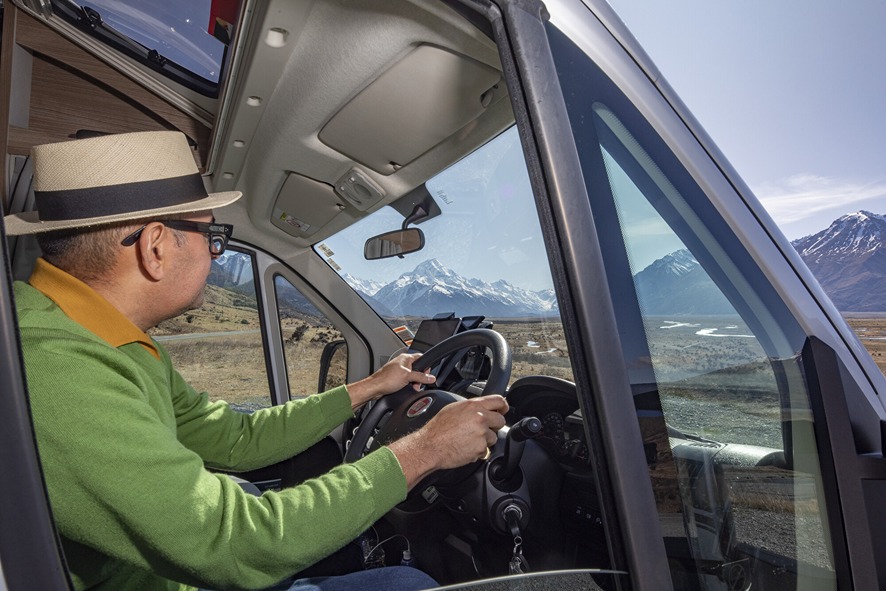
Front wheel drive manufacturers like Fiat are continually improving their design and technology. These days, there are a number of similarities between a new front wheel drive motorhome and your car, such as:
-
The steering position — giving excellent driver visibility
-
The suspension — new Fiat Ducato motorhome platforms have front independent MacPherson suspension, the most common form found in modern cars
-
A lower centre of gravity — to help the motorhome handle like a car.
With the engine and drivetrain components compactly positioned near the front of the motorhome, you’ll enjoy a better distribution of weight and a lower overall profile. Improved handling and stability will also make it easier to control and manoeuvre your motorhome in strong winds and on winding roads.
Traction
Traction avant means forward drive in French — and it’s an apt description because front wheel drive can aid traction. Some of the heaviest driveline components in a motorhome, the engine and transmission, are placed directly over the front driving wheels. This puts increased downward pressure on the front tyres, increasing their grip.
Early front wheel drive vehicles lost traction more easily than contemporary motorhomes. This fostered a still widely-held myth that rear wheel drive gave superior initial traction.
The front wheel drive motorhomes of the 21st century are more adept at initial takeoffs because of improvements to:
- Electronic driving aids
- The differential that transfers torque to the driveshafts
- Front suspension geometry.
|
The major difference in the driving dynamics of front and rear wheel drive motorhomes is now limited to the way they lose traction rather than the way they acquire it. Paul Owen — Award-winning motoring writer |
Front wheel drive dynamics
When the tyres of your front wheel drive motorhome encounter an extremely slippery surface while cornering, the front tyres will lose traction before those at the rear.
This is termed understeer as your motorhome pushes straight ahead instead of obediently tracking the cornering line chosen by your angle of the steering wheel. Essentially, your motorhome’s front wheels have exceeded their limits of traction.
Rear wheel drive dynamics
When your rear wheel drive motorhome hits a slippery surface during cornering, the rear tyres tend to lose their grip first. This is known as oversteer because your rear tyres slide outwards to a wider cornering arc compared to your front ones — and even threaten to overtake them.
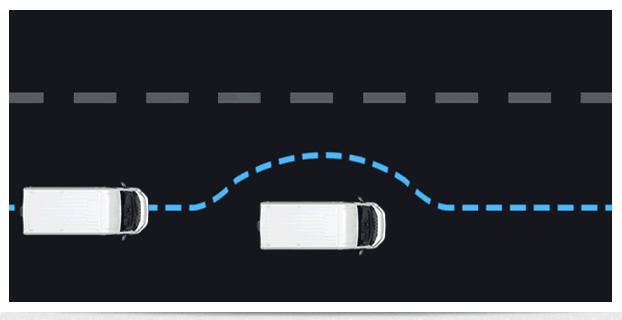
An example of oversteer in a rear wheel drive vehicle.
Why front wheel drive motorhomes are considered safer
From a motorhome manufacturing point of view, the dynamics of front wheel drive motorhomes on slippery corners are considered safer than those of rear wheel drive ones.
Most drivers will react to a sudden loss of traction by lifting their foot off the accelerator. This action will:
- Help correct the understeering tendency of a front wheel drive vehicle, and
- Restore steering wheel control.
Whereas, if you lifted your foot off the throttle in a similar situation in a rear wheel drive motorhome, you would accelerate the oversteer and experience a total loss of control.
Electronic stability control
Modern motorhomes usually have electronic stability control (ESC) fitted, which will:
- Brake each tyre individually, and
- Modulate your engine power.
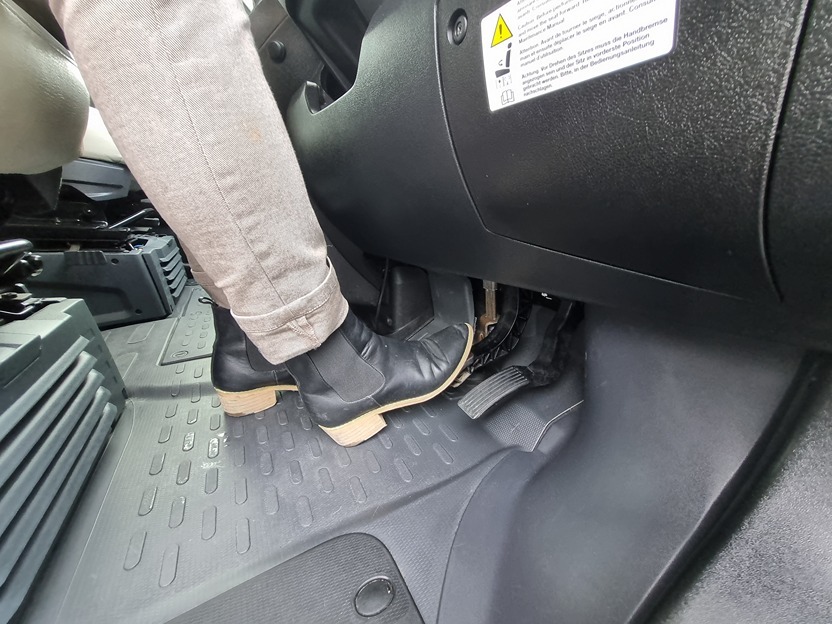
As a result, you’ll be able to better maintain control of your rear or front wheel drive motorhome when cornering on slippery surfaces. However, ESC can only do so much — and a loss of traction may occur too suddenly for it to fully restore control.
The natural tendency of drivers to lift off the throttle when faced with sliding off the road continues to give front wheel drive a significant advantage when it comes to dynamic safety.
Find out about other safety features and technology of German motorhomes.
|
To paraphrase an old Jaguar slogan from last century — front wheel drive allows more space, more graceful design and more of that most marketable of all automotive commodities, pace.
|
Space
Ask any front wheel drive commercial vehicle manufacturer to sum up in a single word why they prefer front over rear wheel drive and the answer is likely to be — space.
When fleet managers are looking to buy new light commercial vans to replace older models, the first specification they research is cargo capacity. Front wheel drive gives these brands an undeniable advantage in cargo area design because the floor can be lower — as there aren’t any driveline components to be accommodated in the back.
This valuable benefit also applies when a front wheel drive van cab chassis is used as a base by a motorhome manufacturer to construct a motorhome.
The extra habitation space can be used to either:
- Provide a lower floor — that enables more ceiling-to-floor height, or
- Permit the use of a double floor — which deadens road noise, improves insulation, provides winterproof water tank locations and allows for extra storage.
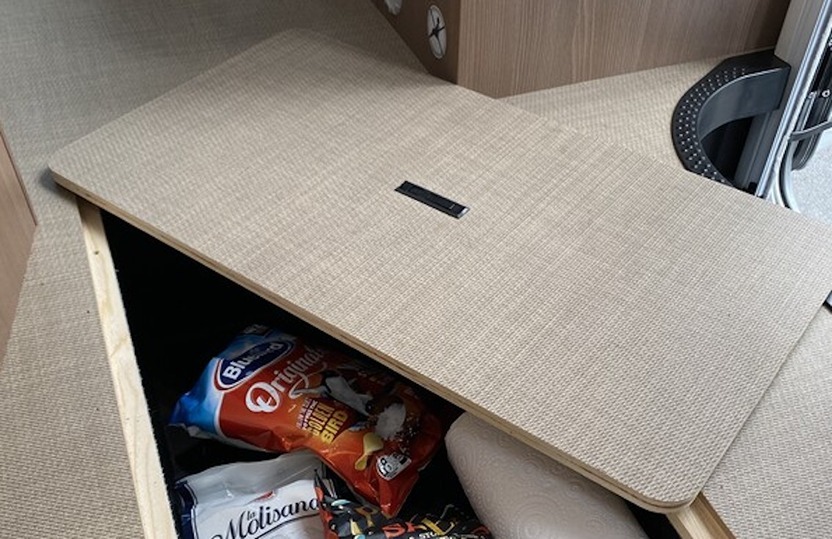
Double floor motorhome bodies offer many advantages over their usually less expensive single floor cousins — and a front wheel drive platform means building one more easily.
See our guide to maximising storage space inside motorhomes.
Grace
The increased freedom of design that made the Traction Avant one of the most attractive French cars ever created, also carries over to front wheel drive motorhomes.
Cab areas can be pulled further forward and made more spacious. This is because they no longer have to straddle a longitudinal powertrain with its:
- Intrusive north-south oriented engine block, and
- Huge cone-shaped transmission casing.
The longitudinal orientation of the engine in a rear wheel drive means the engine protrudes into the cab — making the cab less roomy.
Other benefits of front wheel drive motorhome cabs include the increased floor room — which allows for a decent walkthrough area between the front seats. That’s especially the case if the vehicle manufacturer has been careful to place the handbrake and gear selection controls where they don’t restrict movement.
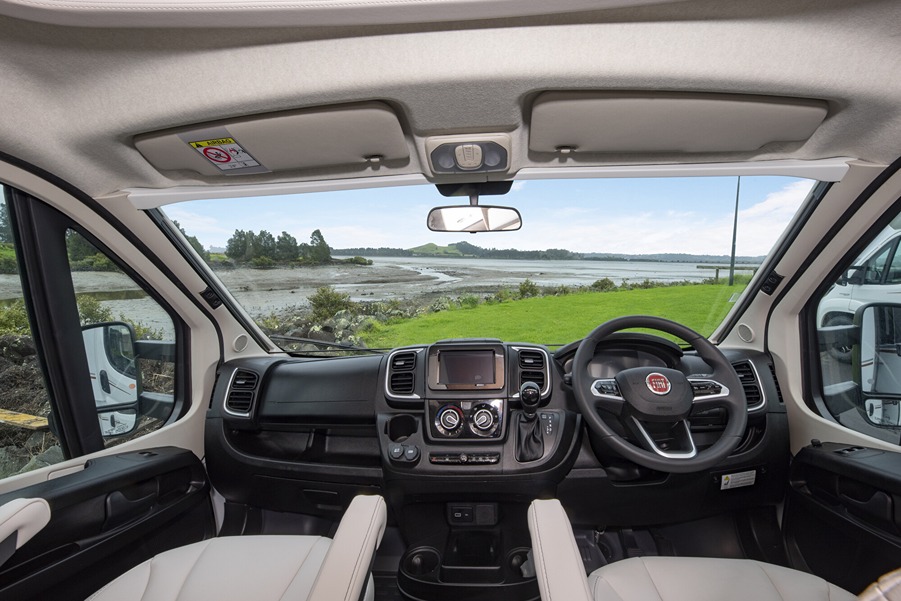
When you’re sitting on the front seats, you’ll generally enjoy better visibility from inside a front wheel drive motorhome cab. This is due to the windscreen being located closer to the front of the vehicle, which ensures a:
- Safety advantage when you’re driving, and
- Scenic boon if you’re a front seat passenger.
Pace
Front wheel drivelines have less mass and therefore less inertia — creating efficiencies that translate into benefits applicable to motorhomes, such as:
- Increased performance
- Reduced fuel consumption.
The transfer of torque into traction is achieved with less of that driving force lost in translation. There’s also a performance advantage due to the reduced transmission losses.
|
New Zealand motorsport star, Shane Van Gisbergen, often holds an informal grass track series for family and friends in his downtime. Entrants have to show up with a car that costs less than NZ$1000. Shane’s choice for his consistent dusting of all comers — an old front wheel drive Nissan Maxima V6. Evidently, only losers show up for these events with rear wheel drive vehicles. Paul Owen |
Centre of gravity
The drivetrain that runs through the centre of a rear wheel drive motorhome has a significant bearing on its centre of gravity — and therefore, its stability and handling.
The longitudinal drivetrain of a rear wheel drive motorhome requires a higher chassis, which means the habitation unit sits higher off the ground. Sitting higher off the ground gives it a comparatively higher centre of gravity than a front wheel drive motorhome.
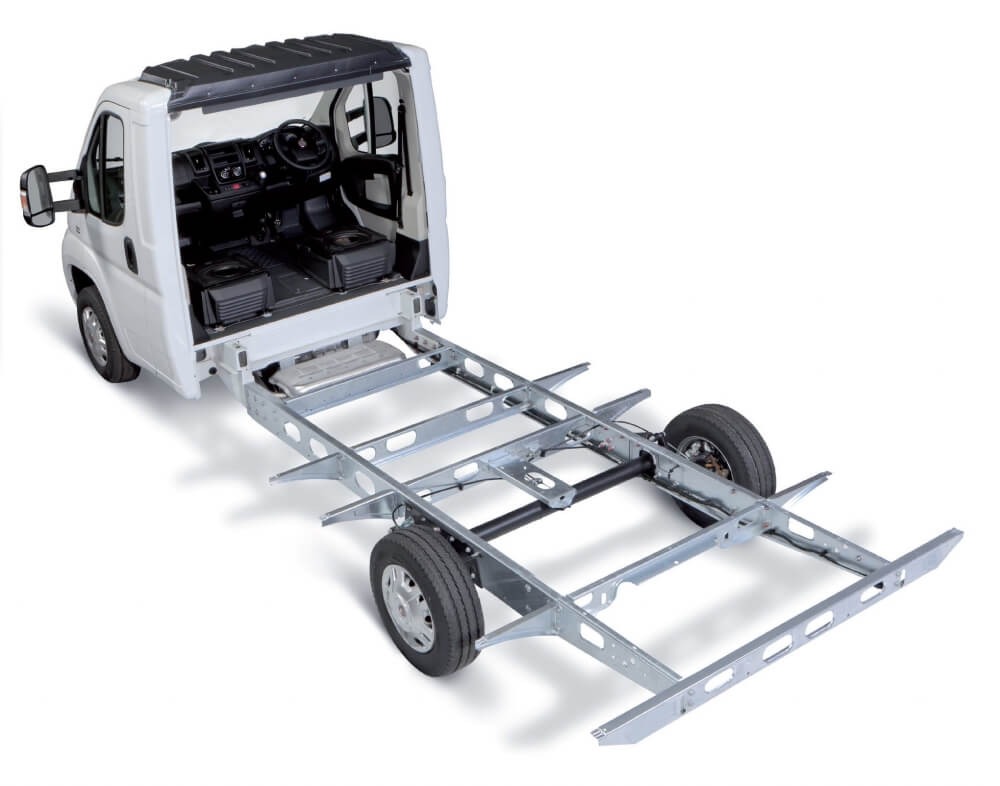
Why width is important
The width of your motorhome also has a bearing on its centre of gravity. What matters is your RV’s combination of height and width — because the lower and wider an object is, the more stable it is.
A motorhome with dual rear wheels, which is common in rear wheel drive motorhomes, is inherently less stable than one of the same dimensions with single rear wheels. That’s because the measure for centre of gravity relating to vehicle width is the centre point of the wheels.
From a handling point of view, it’s better if your motorhome is lower and wider to reduce:
- Weight transfer during cornering and braking
- The propensity to roll over.
Consider how the wide track Hummer improved the stability of its predecessor, the Jeep Willy.
Manufacturers Bürstner and Carado recently converted to wide track chassis to further improve the handling and stability of their motorhomes.
Steering angle
When it comes to manoeuvring in tight spaces, front wheel drive motorhomes have a distinct advantage. The steering angle is smaller than with rear wheel drives — so the turning circle is slightly larger in a rear wheel drive motorhome than a front wheel drive with the same wheelbase.

The lower centre of gravity and better stability of your front wheel drive motorhome:
- Improves road handling — making turning corners more comfortable
- Reduces rocking — when moving around the habitation area while your RV is stationary.
Access
A rear wheel drive motorhome sits higher than a front wheel drive one, to allow for the space needed for the driveshaft. The floor also tends to be higher off the ground.
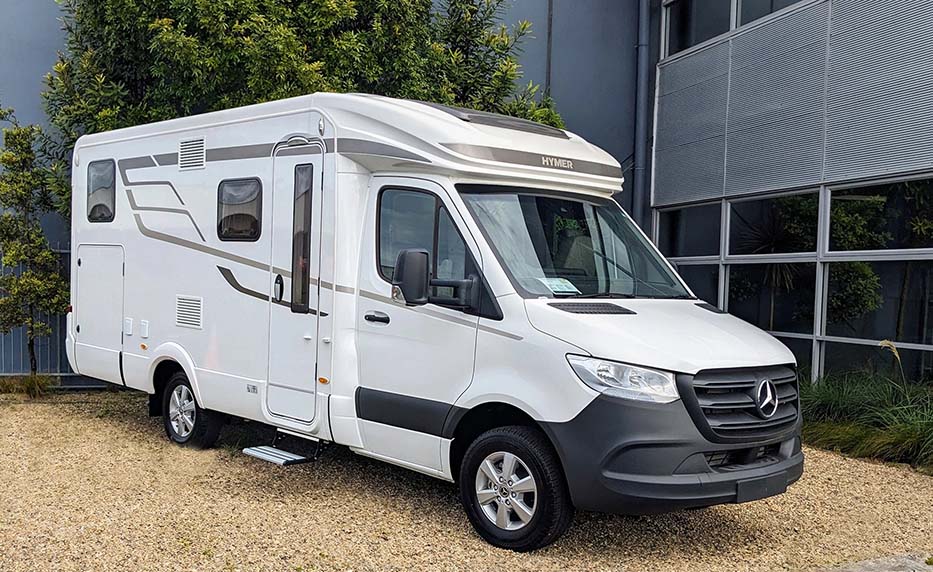
Access in and out of a rear wheel drive motorhome can be a little harder due to its higher floor — so several steps are usually required to climb into its habitation unit.
By comparison, a front wheel drive motorhome has a lower floor — which translates into easier access and more room without increasing the overall height of the recreational vehicle.
Comfort with extra storage
A relatively recent innovation in front wheel drive motorhomes is the double floor which offers:
- Better insulation — to help regulate the interior temperature throughout winter and summer
- More storage — ideal for tucking away shoes and other gear
- The opportunity to improve heat dispersal.
The double floor is only possible because there’s no drivetrain between the front and rear of the motorhome.
How front wheel drive motorhomes improved their performance and reputation
Early front wheel drive vehicles were noted for their wheel-spinning takeoffs — often involving a blaze of blue tyre smoke.
Another tendency was torque-steer, which was particularly prevalent in the turbocharged front wheel drive performance cars of the late 20th century. You could simply use the accelerator to entice a Saab 900 Turbo or Mitsubishi Starion to change direction.
|
Thanks to a plethora of electronic driving aids, revised steering geometry and smarter electronically-governed differentials, the front wheel drive motorhome driveline format is now much improved. Paul Owen |
Enhancements in technology
Most of the drive technology in modern cars can now also be found in new front wheel drive motorhomes. So if you decide to purchase a recent model, you can expect it to have:
- Anti-slip regulation (ASR) — maximises traction when you pull away
- Electronic drag torque regulation (MSR) — limits skidding of the drive wheels to give your motorhome more stability and control
- Hill holding brakes — takes off smoothly when you’re on a steep incline
- Anti lock braking system (ABS) — prevents your motorhome wheels from locking up when stopping quickly
- Autonomous emergency braking (AEB) — keeps track of the road ahead and automatically halts your RV if you fail to take action
- Hill descent control — helps you maintain speed when driving downhill so you don’t have to constantly brake
- Cross wind assist — stabilises your motorhome in windy conditions
- Lane control — uses light steering torque to direct your RV away from the edge of your lane.
All these technologies work in harmony with your RV’s electronic stability control (ESC) system.
Your front wheel drive motorhome may also have post collision braking. It’s designed to automatically activate the motorhome’s brakes following a crash — to mitigate the risk of secondary collisions.
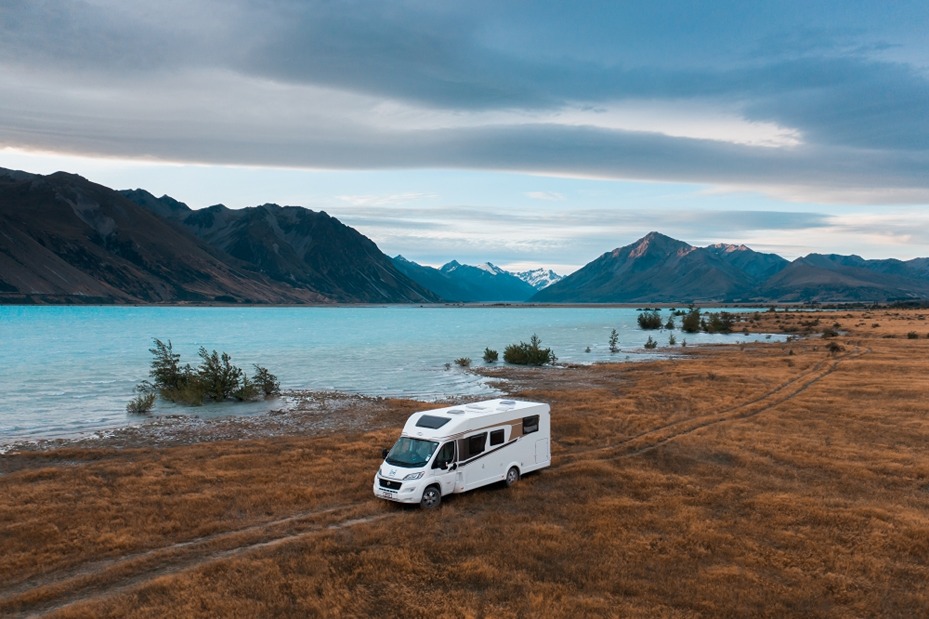
Differentials and Traction+
Manufacturers of front wheel drive motorhomes have attempted to overcome the inherent disadvantages of having most of the vehicle’s weight sitting over the passive (rear) wheels.
Some front wheel drive motorhome platforms have found part of the solution using differentials that can vary the amount of torque reaching each of your RV’s front tyres. As a result, the tyre with the most grip will get more driving force than the one with less.
The Fiat Ducato, Peugeot Boxer and Citroën Trafic all have a similar grip-enhancing feature called Traction+. Fiat calls Traction+ the intelligent electronic differential as it can help your motorhome tackle mud, snow, sand and wet grass.
How Traction+ works
Traction+ works by improving your motorhome’s grip on the road when traction loss is detected on one or more wheels.
The technology uses your motorhome’s ESC system to simulate a limited-slip differential. When one wheel is losing grip, brakes are applied to that particular wheel — and torque is transferred to the wheel with the most grip so your motorhome can regain traction.
This process helps your motorhome to:
- Maintain stability and steering control
- Go where you intend it to
- Continue moving forward more effectively.
|
Front wheel drive motorhomes are now at such a high level. There are no longer any real advantages to be gained by using a rear wheel drive platform for motorhomes with maximum torque outputs of less than 600Nm. Paul Owen |
Front wheel drive experience — the Maddrens’ take on the Molesworth
To get out of sticky motorhome situations, it’s important to understand how your RV performs in different conditions and what your workarounds are.
We chatted to John and Barbara Maddren about how their front wheel drive Bürstner fared driving the notoriously challenging Molesworth Road in the upper South Island. It was something they’d always wanted to do, as John explains.
Molesworth Station has long been on our potential destination list and we had the opportunity to go with our experienced motorhoming friends.
Traversing an area rich in history
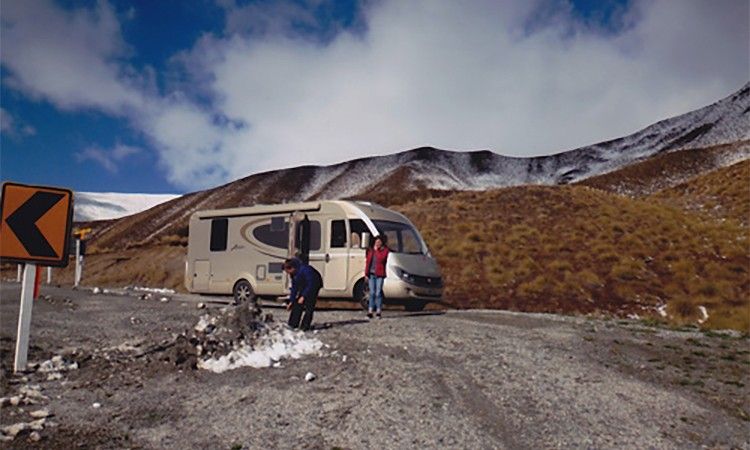
An iconic high country reserve, Molesworth Station is located northeast of Hanmer Springs. It’s New Zealand’s largest farm with the country’s biggest herd of cattle.
It’s not only the craggy scree-sloped mountains, wide river valleys and spectacular tussock slopes that drew us there — it's also the rich history of the area. There’s still plenty of evidence of early settlers, including cob cottages and suspension bridges.
Access is via Acheron Road — which is only open from early October to early April and is described as a narrow, unsealed backcountry road.
Driving outside their comfort zone
Travelling off road was a fairly new experience for the Maddrens so they had to take their time, as John outlines.
We had to be aware when driving across fords and other hazards — but by taking things slowly and at an angle, we never got stuck.
There were some places where we stopped on a steep incline to see the view or let another vehicle pass and we had a little trouble getting going again. However, some rear wheel drive vehicles also seemed to have the same problems — so we didn’t feel like we were having more difficulty than anyone else.
|
Front wheel drive proved to be remarkably good for the conditions we experienced. It easily pulled us through the wet and dry fords and up short, sharp inclines very effectively.
John Maddren — Bürstner front wheel drive motorhome owner |
We talked to another friend of ours who travels on snow-covered roads. He reckons that front wheel drive motorhomes are much easier to fit chains on — with the added bonus of having traction and steering on the same wheels.
The best road trip yet
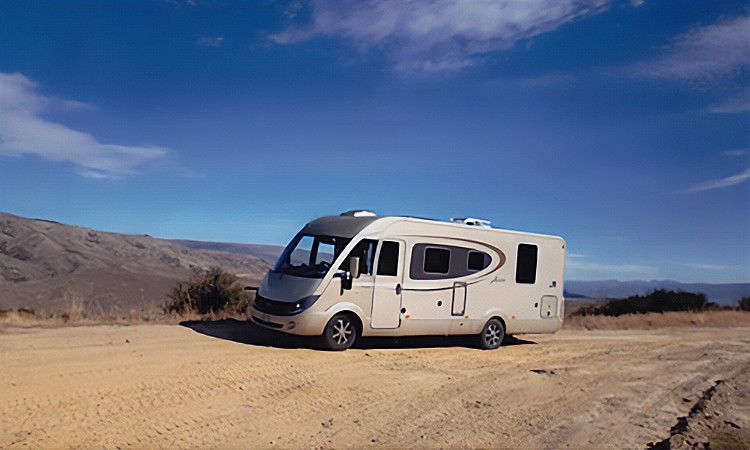
The Maddrens have been on plenty of incredible road journeys but they came to the conclusion that the Molesworth in their front wheel drive motorhome was the best.
We drove through the Molesworth in ideal weather conditions and because it was dry, we experienced both loose and tight gravel areas.
Perhaps the biggest amazement for us was the stunning scenery. Although, we suspect that bad surprises are more likely to come in poor weather conditions.
We rate the Molesworth as the best road trip we’ve ever done — better than the Desert Road, the Catlins, the Great Ocean Road and the coastal drive from San Francisco to Los Angeles. Our front wheel drive Bürstner certainly exceeded expectations.
The front wheel drive motorhome format has many advantages. Notably, the lower cost of purchase and ownership, and the design freedom that it permits towards the creation of a more spacious and comfortable cabin.
Check out our comprehensive Guide to Buying the Right Motorhome. From choosing the right type to understanding key features, we’ve got everything you need to make an informed decision.


